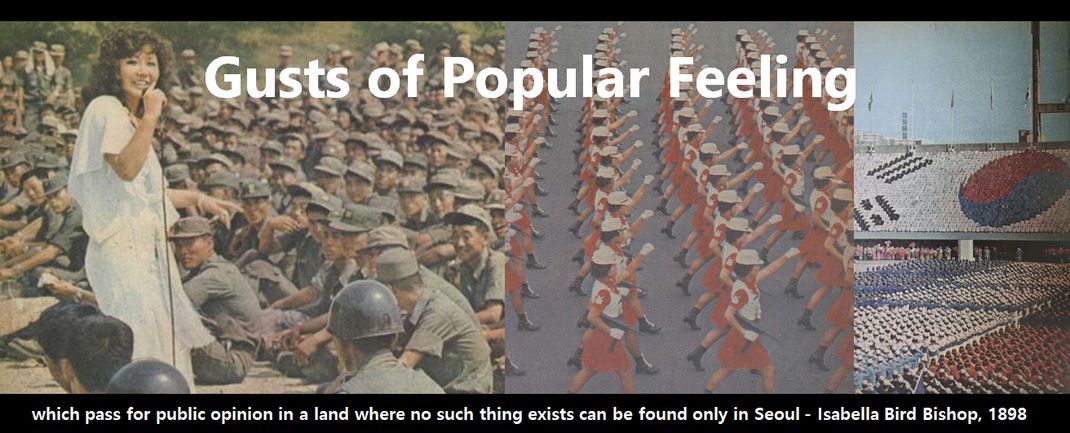Over the Chuseok long weekend I visited a number of sites that might be of interest. First up was Dondeokjeon, the European-style building in Deoksu Palace that was demolished in the 1920s and, after being restored, was opened to the public last week.
A model of the building.
I guess I hadn't been inside Deoksugung since 2018 (other than grabbing a coffee with a friend by the pond during Covid since it was a central and scenic place to sit outside), so I was surprised to see the gate that once stood in the southwest corner, where it sheltered a water clock,
hwacha (multi-cylinder rocket launcher), and a temple bell, was gone. As it turns out, it was moved in 2018 closer to the entrance and back to where it originally stood as the gate to Gojong's sleeping quarters.
Gwangmyeongmun
I'm not sure where the relics it sheltered went. The bell was from Heungcheonsa, a temple built on the grounds of what is now Deoksugung in 1397 by King Taejo in honour of his recently deceased wife, Queen Sindeok; its bell was commissioned by King Sejo in the 1460s in response to his feeling a bit bad about killing his nephew to take the throne, and the temple stood until it was mostly demolished under the tyrant Yongsan-gun and the sari hall burned by fired-up Confucian students out to destroy heresy in 1510, after which the bell moved from palace to palace, landing in Deoksugung by the 1950s and now gone to who-knows-where. (For more on that temple, and Jeong-dong's history, see Gregory Henderson's article "A History of the Chŏng Dong Area and the American Embassy Residence" from the RAS Transactions Volume XXXV (1959), which can be found here.)
A couple days later I headed to Mullae-dong. While I'd visited it before, I'd never been there on a warm evening, and it had quite a different feel to it as the narrow alleys had tables with customers spilling out into them. It makes for a unique urban space, which would explain the past decade of gentrification.
The next day I visited the Noryangjin Underground sewer, a restored tunnel dating back to perhaps 1899 which has various shapes and is an interesting place to explore (though it is only 92 meters long, so it's not a place you'll spend a lot of time in). It's near exit 7 of Noryangjin station (walk straight from the exit for 250 meters).
If you continue walking in the same direction for five minutes, on the south side of the street you'll find this building, now a wedding hall.
It doesn't look like much, but this is where the 1971 Silmido incident (which inspired the 2003 film of the same name) ended when the soldiers in a hijacked bus were stopped and they blew themselves up with grenades (I wrote about it
here long ago, where I first posted these photos). The second photo confirms that the bus was stopped at the right of the above photo (before the road was widened).
Older brickwork is visible in the sections behind the main street:
The cornerstone makes it clear that it was constructed in 1961 by the Yuhan Corporation, the pharmaseutical company established by Ilhan New (Yu Il-han) in 1926. (
Wikipedia has more interesting information about him, with even links to the OSS during WWII.)
Then it was off to Yeouido, passing over the ecology park on the "inner side" of the island
Robert Fouser led an interesting excursion for the Royal Asiatic Society here back in June, when I took the following photos, which make it clear just how rural it feels down there in certain areas:
The next place to visit was SeMA Bunker, the underground bunker, likely built in 1977, that lies beneath Yeouidaero next to the bus stops near the International Finance Center and across from Yeouido Park. (The entrance is
here.) The bunker was located beneath where stands were placed when Park Chung-hee would oversee military parades. It was perhaps last 'checked on' in the early 1990s, forgotten about, and rediscovered in 2005, and opened to the public as a gallery space in 2017 under management of the Seoul Museum of Art. The large space inside serves as a gallery, while a smaller section which housed sofas and a bathroom serves as a museum.
What the bunker, inundated with water, looked like when it was rediscovered.
Perhaps one of these days it would be worth documenting the slow, though increasing, gentrification of the area around Sindang Station.





































